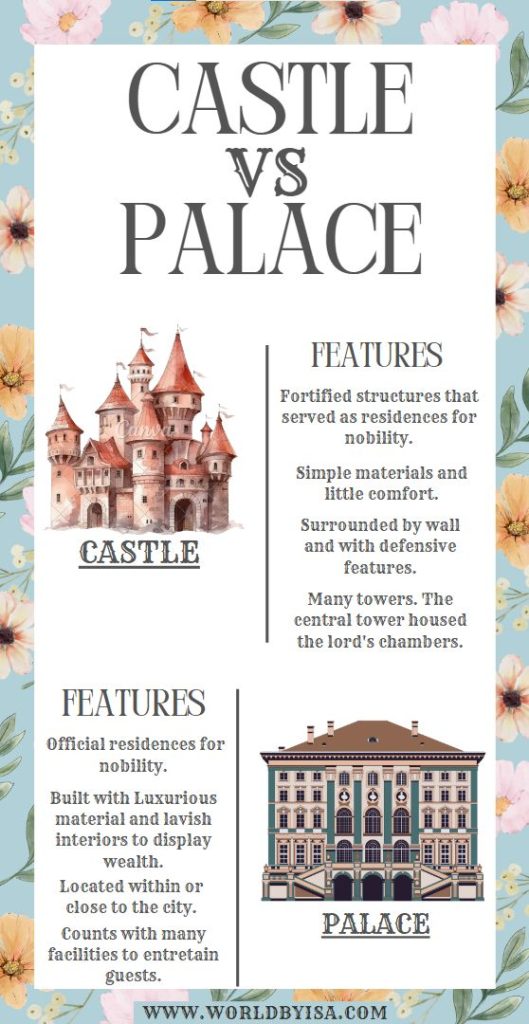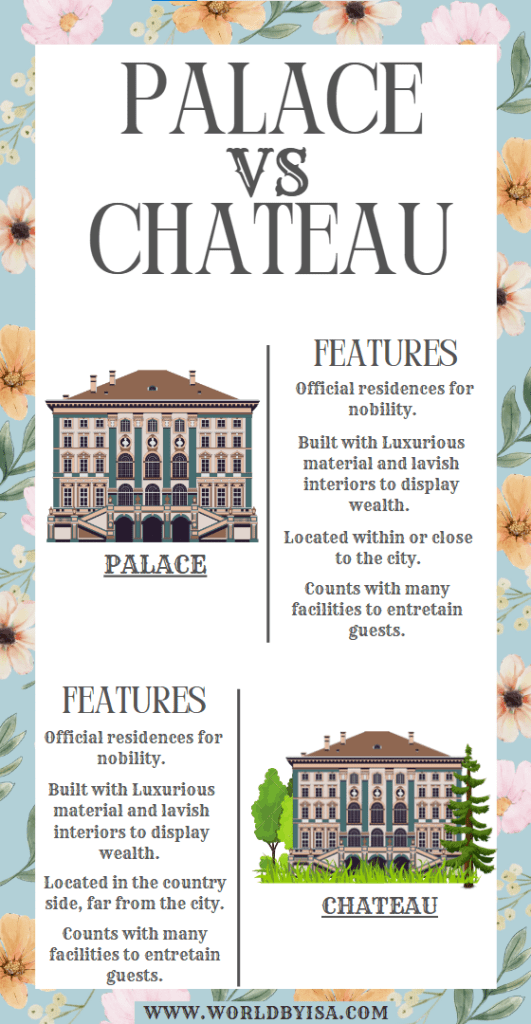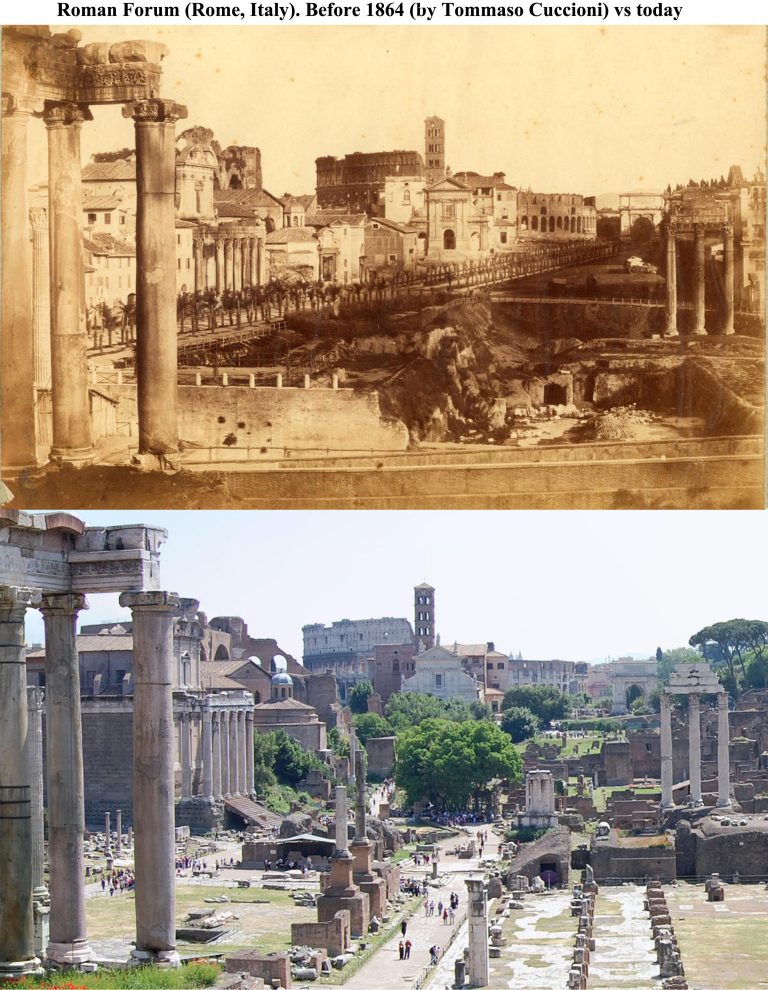What is the Difference Between a Castle, a Palace, and a Chateau?
Have you ever stood in front of a grand building, wondering whether it’s a castle or a palace?
You’re not alone!
These majestic structures have long captured our imaginations, with their turrets, towers, and lavish halls straight out of a fairy tale.
But despite the similarities, castles and palaces serve very different purposes, and their histories, designs, and roles reflect that.
If you’ve ever been curious about what sets them apart, you’re in the right place.
In this post, we’ll break down the key differences between castles and palaces, from their architectural features to the people who lived in them.
Whether you’re planning a trip to a medieval fortress or dreaming of wandering through a royal residence, understanding what makes each one unique will help you appreciate their stories even more.
Ready to dive into the world of stone walls and gilded ballrooms? Let’s go!
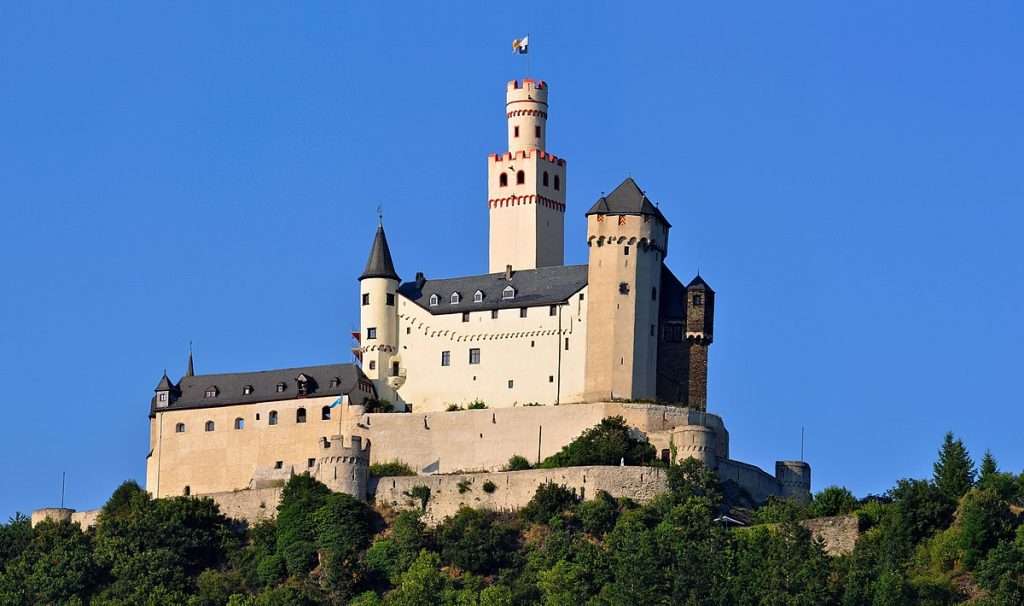
What is a Castle?
As we just saw, castles are fortified structures built primarily for defense, typically during the Middle Ages in Europe.
They served as residences for nobility, administrative centers, and military strongholds.
Castles are surrounded by thick walls made of stone or brick, often with defensive features such as battlements, crenellations, and arrow slits.
These walls were designed to withstand attacks from enemy forces.
Another defensive feature usually present in Castles, is the moat, a water-filled ditch, to impede attackers.
A drawbridge provided access to the castle’s entrance, which could be raised in times of danger.
Castles are also famous for their towers, varying in shape and size, providing vantage points for defenders to spot approaching enemies and launch counterattacks.
Towers also served as living quarters for the castle’s inhabitants.
The central tower or keep is the heart of the castle, serving as the last line of defense.
It housed the lord’s chambers, storerooms, and other essential facilities.
The outer courtyard of the castle, known as the bailey, contained various buildings such as stables, workshops, and barracks for soldiers.
It served as a bustling hub for daily activities within the castle.
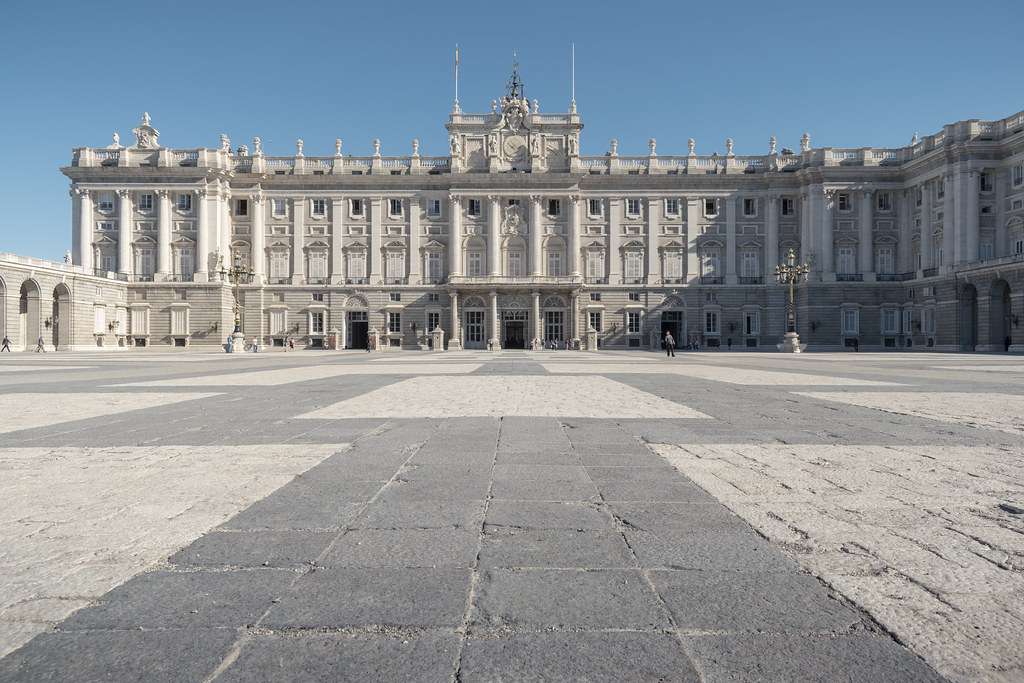
What is a Palace?
Palaces are grand residences typically associated with royalty, aristocracy, or other influential figures.
Unlike castles, which are primarily built for defense, palaces focus on luxury, comfort, and aesthetic appeal.
These buildings are renowned for their opulent architectural designs, featuring grand facades, intricate detailing, and elaborate ornamentation.
They are usually set within extensive grounds or curated gardens, providing a sense of tranquility and grandeur.
Inside the palace, visitors are greeted with lavish interiors adorned with fine furnishings, exquisite artwork, and luxurious materials such as marble, gold leaf, and rare woods.
Palatial rooms often include grand ballrooms, ornate dining halls, and sumptuous living quarters.
So besides functioning as a residence, palaces were also areas of entertainment, hosting ceremonies and official events
Palaces, most of the time, are located within the city or very close to it.
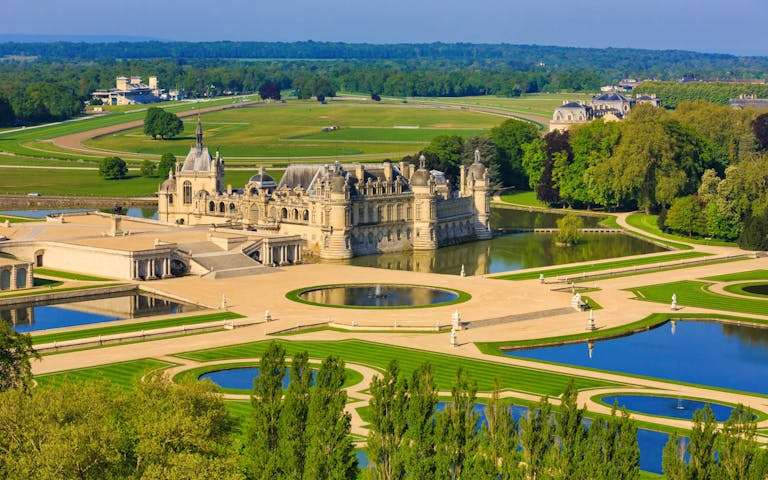
What is a Château?
A château is a French term used to describe a grand country house or mansion, particularly those found in France. Châteaux are known for their elegance, charm, and association with leisure, luxury, and the aristocracy.
They are similar to palaces but situated in picturesque rural or vineyard settings, surrounded by beautiful landscapes, rolling hills, or expansive gardens.
While some châteaux were purely residential estates, others served multiple purposes, including agricultural production, wine-making, hunting lodges, and entertainment venues. They often featured outbuildings such as stables, farmhouses, and guest cottages to support these functions.
So, what is the difference between a Castle and a Palace?
A castle is a fortified residence built for defense, typically during the Middle Ages.
Designed to protect its inhabitants from attacks, castles feature strong defensive elements like thick walls, towers, and moats.
While they also served as homes for nobility, their primary focus was on security and military strength.
Castles were often strategically placed in locations that needed protection, such as hilltops or near trade routes.
A palace is a grand, unfortified residence built to showcase wealth and power, with no defensive purpose.
Palaces are luxurious and designed for comfort, opulence, and political prestige, often featuring large, ornate rooms, gardens, and spaces for entertaining.
Unlike castles, which were built for defense, palaces are purely residential and symbolic, representing the status and authority of the ruler.
